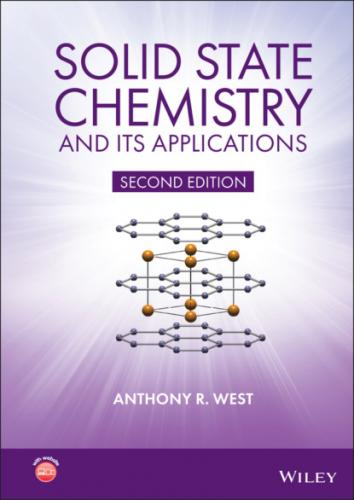R. W. G. Wyckoff, Crystal Structures, Vols 1 to 6, Wiley (1971).
Two main groups of compounds exhibit the rutile structure, Table 1.15: oxides of tetravalent metals and fluorides of divalent metals. In both cases, the metals are too small to have eight coordination and form the fluorite structure. The rutile structure may be regarded as essentially ionic.
The CdI2 structure is nominally similar to that of rutile because it has an hcp anion array with also, half of the octahedral sites occupied by M2+ ions. The manner of occupancy of the octahedral sites is quite different, however; entire layers of octahedral sites are occupied and these alternate with layers of empty sites, Fig. 1.39. CdI2 is therefore a layered material in both its crystal structure and properties, in contrast to rutile, which has a more rigid, 3D character.
Two I layers in a hcp array are shown in Fig. 1.39(a) with the octahedral sites in between occupied by Cd. To either side of the I layers, the octahedral sites are empty. Compare this with NiAs [Fig. 1.35(d) and (h)] which has the same anion arrangement but with all octahedral sites occupied. The layer stacking sequence along c in CdI2 is shown schematically in Fig. 1.39(b) and emphasises the layered nature of the CdI2 structure: I layers form an … ABABA … stacking sequence. Cd occupies octahedral sites which may be regarded as the C positions relative to the AB positions for I. The CdI2 structure is, effectively, a sandwich structure in which Cd2+ ions are sandwiched between layers of I– ions; adjacent sandwiches are held together by weak van der Waals bonds between the I layers. In this sense, CdI2 has certain similarities to molecular structures. For example, solid CCl4 has strong C–Cl bonds within the molecule but only weak Cl–Cl bonds between adjacent molecules. Because the intermolecular forces are weak, CCl4 is volatile with low melting and boiling points. In the same way, CdI2 may be regarded as an infinite sandwich ‘molecule’ in which there are strong Cd–I bonds within the molecule but weak van der Waals bonds between adjacent molecules.
The coordination of I in CdI2 is shown in Fig. 1.39(c). An I at
The layered nature of CdI2 is emphasised further in a model of polyhedra: CdI6 octahedra link at their edges to form infinite sheets, Fig. 1.39(d), but there are no direct polyhedral linkages between adjacent sheets. A self‐supporting, 3D model of octahedra cannot be made for CdI2, therefore. Some compounds which have the CdI2 structure are listed in Table 1.16. It occurs mainly in transition metal iodides, bromides, chlorides and hydroxides. TiS2 has the CdI2 structure and was considered as a potential intercalation host cathode for use in lithium batteries (see Section 8.4): Li+ ions are able to diffuse into the empty layers that separate adjacent TiS2 sheets at the same time as electrons enter, and migrate through, the 3d band composed of d xy orbitals on Ti.
Figure 1.39 The CdI2 structure: (a) the basal plane of the hexagonal unit cell is outlined, with two possible choices of origin; (b) the layer stacking sequence; (c) the coordination environment of I; (d) a layer of close packed octahedra; empty tetrahedral sites are arrowed.
Table 1.16 Some compounds with the CdI2 structure
| Compound | a/Å | c/Å | Compound | a/Å | c/Å |
|---|---|---|---|---|---|
| CdI2 | 4.24 | 6.84 | VBr2 | 3.768 | 6.180 |
|
|
